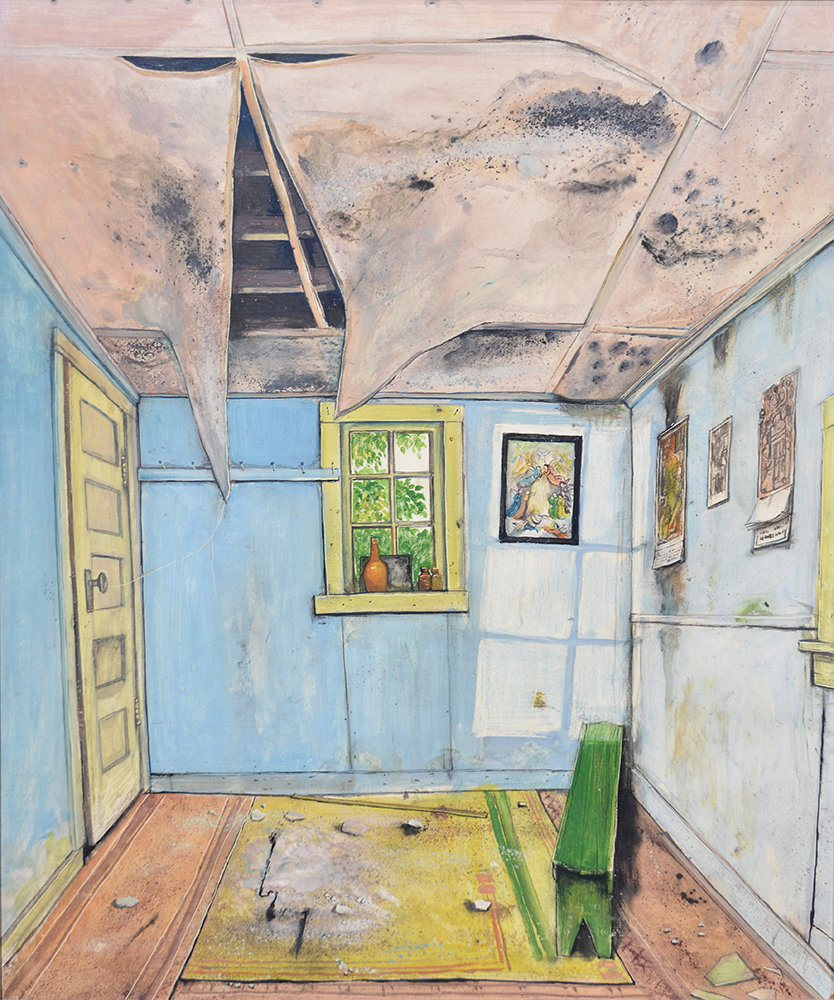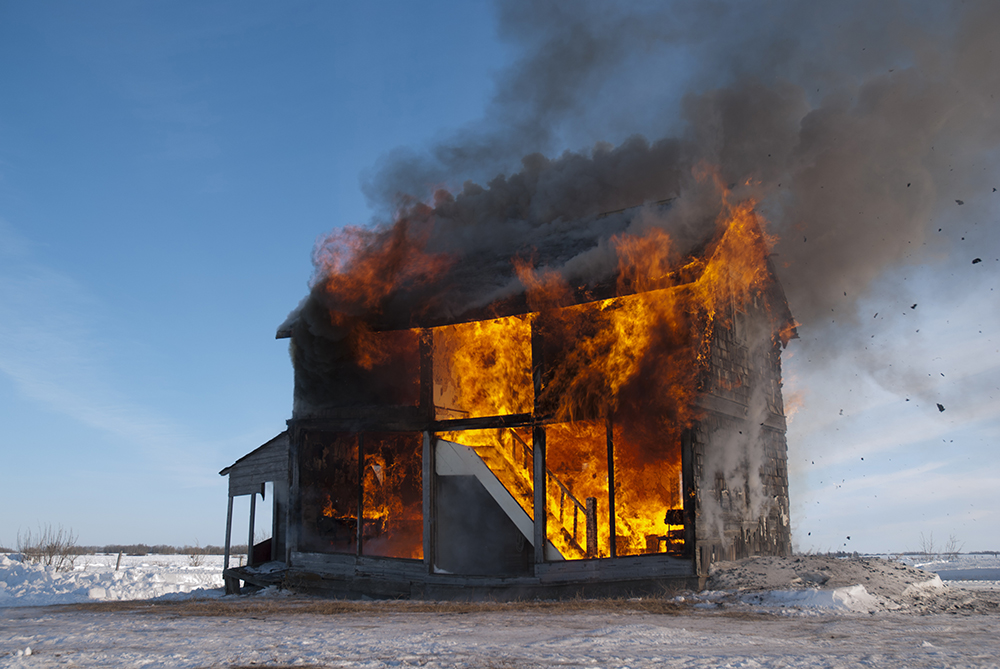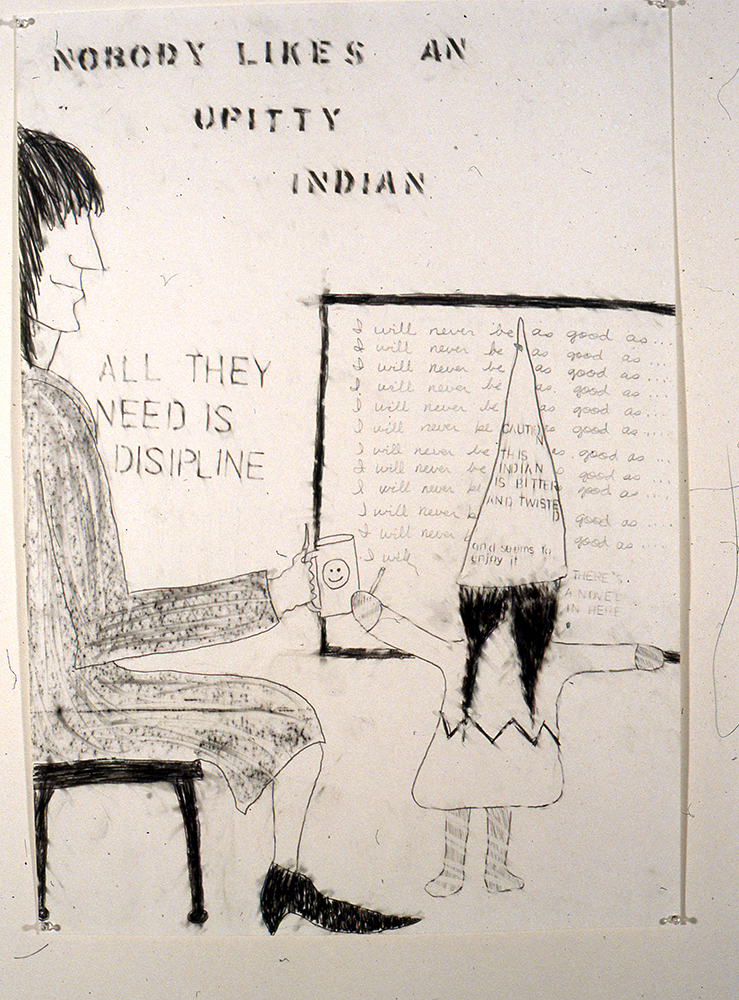Prairie Gothic
Another common theme in Prairie Vernacular art is the Prairie Gothic. Like its medieval counterpart, this genre deals with philosophical angst. The work considers irony and loss, and explores some of the darker narratives within prairie life. It tells stories of the challenging, morbid, or bleak elements of prairie living.
Artist William Kurelek grew up in Manitoba, son of Ukrainian immigrants. He had a difficult depression-era childhood, and mental health troubles in adulthood. He felt his conversion to Roman Catholicism saved his life. He painted and illustrated books with heavy moral messages as his way of giving back. Much of his work features tragic and apocalyptic scenes in isolated prairie landscapes. Faith of My Fathers shows a decaying building interior, a house abandoned. Pictures and calendars are still on the wall, suspended ceiling rotting through. It seems to have been abandoned quickly but left in that state for some time.
Another theme in Prairie Gothic art is the loss of traditional rural lifestyles. Family farms being absorbed by corporations, and their residents moving to cities is a common theme. As are the growing isolation of those that remain, and disillusionment at the hardships faced by those promised an idyllic life.
Saskatchewan artist Heather Benning found inspiration in Gothic architecture while studying in Scotland. She has applied some of these sensibilities to her work. She uses Gothic symbolism to tell stories of regular people living rural lives, and address some of their hardships and ultimate mortality through relatable, though dark, narrative. Her work The Dollhouse documents the destruction by fire of an earlier site-specific installation. That work saw an abandoned farmhouse cut in half and glassed over to resemble a similarly-abandoned dollhouse toy. Hauntingly empty, it reflects the loss of rural lifestyles, and the imagination and hope that preceded that loss.
Hear Heather Benning discuss finding the house for The Dollhouse project, and her origins as an artist in Saskatchewan:
Heather Benning – Artist Interview. Enjoy this audio clip with an English transcript.
A core subject for Indigenous Prairie Gothic artists is colonial trauma. These works show how colonial harms interact with memory, history, and everyday life. They also reflect profound loss, both of ways of life and of life itself. They grapple with the cultural and historical erasure that continues to occur.
Saskatchewan artist Ruth Cuthand grapples with historical and modern colonial harms in her work. She considers both the complexity of Indigenous identity and of Indigenous/settler relations. Cuthand takes an “anti-aesthetic” approach to challenge the idea of Canadian politeness and confront issues more directly.
January Thaw, Edge of Town is part of a series addressing ongoing racism in Canada. It depicts the “White Liberal” as a teacher admonishing the Indigenous student for speaking up or stepping out of line. It reflects Cuthand’s own experiences of discouragement from advocating “too strongly” or seeking justice in ways that have made settlers uncomfortable.
Living on the prairies is a significant challenge. The isolation, exposure, and need for self-reliance wears on the mind and spirit. So does the need to constantly adapt to what a rural existence means in changing circumstances. Prairie Gothic art explores what happens at the darkest edge of these experiences.
See Bibliography for sources.




